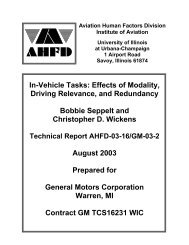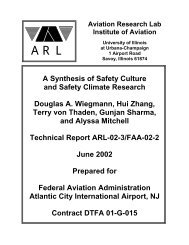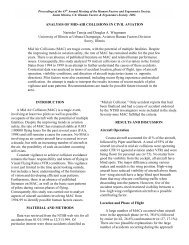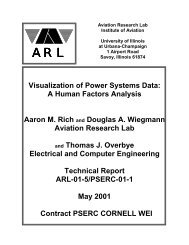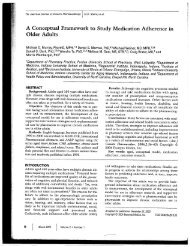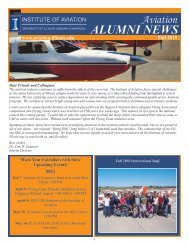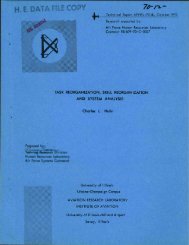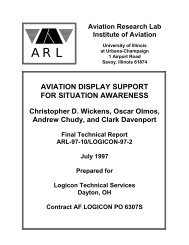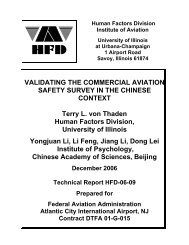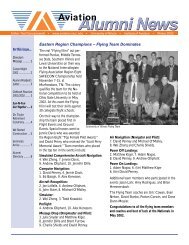Defining and Assessing Safety Culture in High Reliability Systems
Defining and Assessing Safety Culture in High Reliability Systems
Defining and Assessing Safety Culture in High Reliability Systems
You also want an ePaper? Increase the reach of your titles
YUMPU automatically turns print PDFs into web optimized ePapers that Google loves.
Anderson, N., & West, M. A. (1996). The team climate <strong>in</strong>ventory: Development of the TCI<br />
<strong>and</strong> its applications <strong>in</strong> teambuild<strong>in</strong>g for <strong>in</strong>novativeness. European Journal of Work &<br />
Organizational Psychology, 5(1), 53-66.<br />
The Team Climate Inventory (TCI) describes the development <strong>and</strong> application of a facet-specific<br />
measure of group processes <strong>and</strong> climate for <strong>in</strong>novation. TCI is a 44-item scale, composed of 15<br />
subscales, <strong>and</strong> five superord<strong>in</strong>ate scales:<br />
(1) Participative safety,<br />
(2) Support for <strong>in</strong>novation,<br />
(3) Vision,<br />
(4) Task orientation, <strong>and</strong><br />
(5) Social desirability.<br />
All scales <strong>and</strong> subscales revealed acceptable reliability <strong>and</strong> were shown to predict subsequent<br />
levels of team <strong>in</strong>novation. Two case studies of the use of the TCI with senior management teams<br />
<strong>in</strong> the UK are described to illustrate the use of the measure as a tool for teambuild<strong>in</strong>g dur<strong>in</strong>g a<br />
period of organizational change.<br />
Bailey, L. L., Peterson, L. M., Williams, K. W., & Thompson, R. C. (2000). Controlled<br />
flight <strong>in</strong>to terra<strong>in</strong>: A study of pilot perspectives <strong>in</strong> Alaska (DOT/FAA/AM-00/28).<br />
Based on the “Swiss Cheese” Model of Accident Causation <strong>and</strong> the Human Factors Analysis <strong>and</strong><br />
Classification System (HFACS), a 103-item questionnaire was developed cover<strong>in</strong>g the follow<strong>in</strong>g<br />
doma<strong>in</strong>s:<br />
(1) Organizational <strong>in</strong>fluences,<br />
(2) Unsafe supervision,<br />
(3) Preconditions for unsafe pilot acts, <strong>and</strong><br />
(4) Unsafe pilot acts.<br />
This questionnaire was used to identify pilot <strong>and</strong> organizational risk factors for a Controlled<br />
Flight Into Terra<strong>in</strong> (CFIT) accident <strong>in</strong> Alaska. The survey successfully dist<strong>in</strong>guished the<br />
perceptions of pilots of not-CFIT <strong>and</strong> CFIT companies <strong>in</strong> the follow<strong>in</strong>g areas: organizational<br />
<strong>in</strong>fluences, preconditions for unsafe acts, <strong>and</strong> unsafe supervision. The survey revealed that pilots<br />
who worked for companies who had a CFIT accident rated their company’s safety climate <strong>and</strong><br />
practices significantly lower than pilots who worked for CFIT-free companies. Based on the<br />
results, several recommendations were developed to reduce the number of CFIT accidents <strong>in</strong><br />
Alaska, which <strong>in</strong>clude: <strong>in</strong>crease pilot awareness of CFIT safety-related issues, improve company<br />
safety culture, improve pilot tra<strong>in</strong><strong>in</strong>g <strong>in</strong> the environment <strong>in</strong> which they commonly fly, improve<br />
weather brief<strong>in</strong>gs, <strong>and</strong> elim<strong>in</strong>ate pressure to complete a flight.<br />
2




